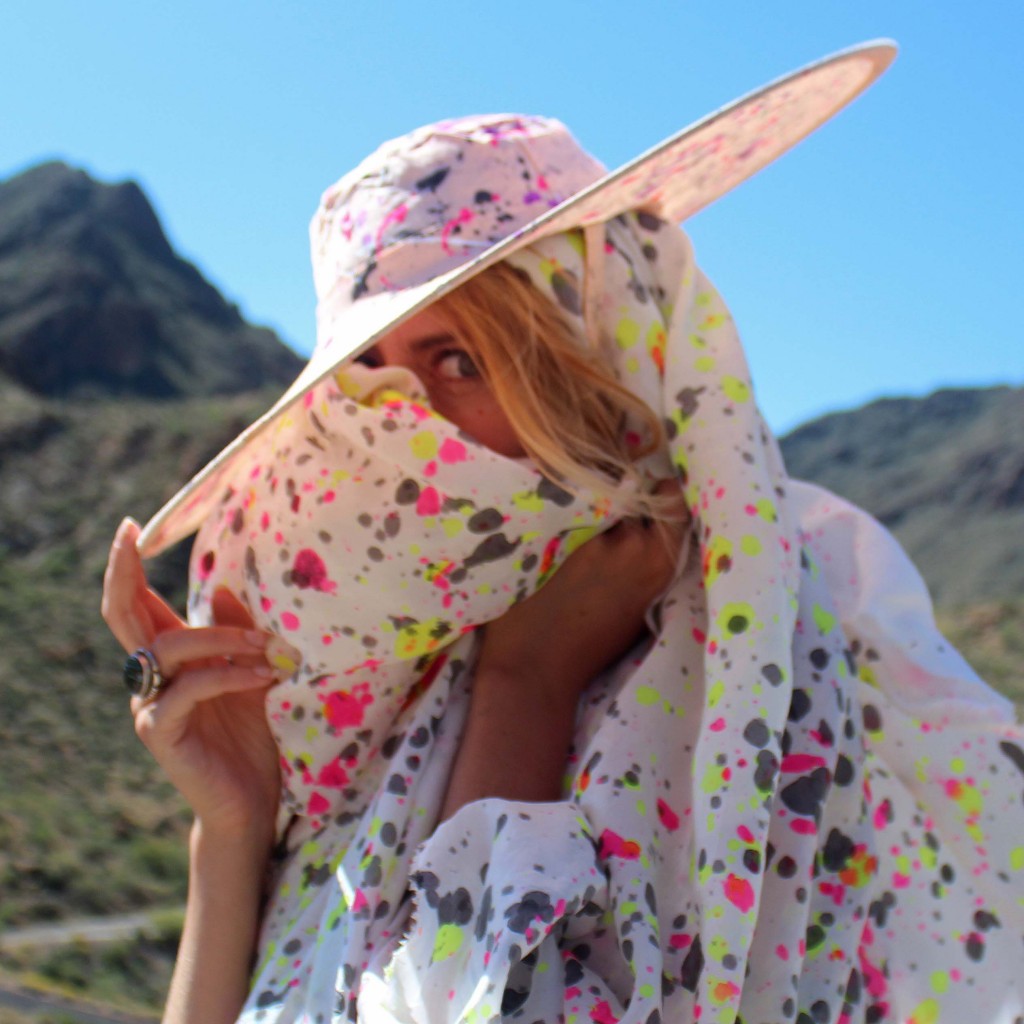by Annika Earley
There are rare moments when we engage with nature in which we cannot help but feel that we have entered the elusive and sacred space of Intimate Immensity. French philosopher Gaston Bachelard who, in his Poetics of Space, discussed this phenomenon at length, proposing that in these rare spaces the self opens up to the world and, in doing so, creates a new ground for innovation. Artist Maisie Broome has managed to perfectly translate this cosmic communion in her work. Spending her summers on Bear Island, just off the shore of Mount Desert Island, Broome creates collections of garments that respond to and reflect specific places: her work simultaneously exudes and invokes nature.
In her collection Island & I — which was made completely by hand and off the grid using heliographic 1 and salt water dying techniques — it is as if Broome gently tugged at the corner of the ocean and draped it over the women modeling the pieces. Ralph Waldo Emerson’s notion of the absorbent rather than reflective eyeball is at work here: not only is Broome a keen and patient observer of nature, but she is also a participant.
This dynamic is equally palpable in Sky Rock Snake, a collection created with handcrafted textiles and photographed in Chiricahua National Monument, Arizona. Here, the delirium and utter awe that can often be felt in these vast spaces becomes nearly playful: Broome’s neon and stone-colored marble patterned shorts bring to mind the topography of deserts as well as the joy and magic that the landscape holds.
The pieces in all of Broome’s collections are equally intelligent and exuberant, creating an aesthetic that not only mirrors the landscape, but becomes part of it as well. Recently, Broome graciously spent some time with The Chart to talk about her work as well as her upcoming residency at the Textile Arts Center in Brooklyn, New York.
Annika Earley: How long have you been living on Bear Island, and how did that start for you?
Maisie Broome: This is my third summer here. I was raised as a child on Eagle Island, which is nearby and where my parents were caretakers for about ten years, and I was searching for a way to be back in this area and back on the islands because they hold so much power for me. I found an ad in the Caretaker Gazette, which is a worldwide caretaking publication, and there was a little ad in there that said, “Island needs Ingenious Caretaker”. It didn’t say where it was — it said it was in Maine, but not where in Maine — so I applied and it turned out to be right next door to the island where I grew up. The woman that put the ad out knew me as a child, so it was this cosmic connection.
AE: It actually said “ingenious caretaker”?
MB: Yeah, that’s a big thing on the island because everything is always breaking. You need to figure out unique ways of fixing things without being able to run to the hardware store. But yeah, that’s how it happened. I was really excited to be back out in this area because it’s just full of memories for me and is such a special place.
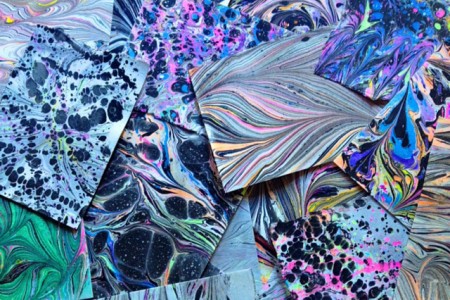
AE: Travel, or rather discovery and adventure, seems to play a large role in your process. But also, very specific places and being a part of these specific places are also evident.
MB: Growing up on Eagle Island, there was a very strong sense of place because we were the only year-round family there. When we moved off, I was always trying to find that special place again. We lived in Albuquerque, New Mexico, Oakland, California, spent time in Montana, came back to Maine. As soon as we left the island — which was all I knew as a child — we took off on this adventure of exploration of cities. It was like this bombardment of experiencing the world in a new way, which I continued doing ever since I could. Traveling as much as possible and learning as much as possible, I think, came from being so isolated as a child and then having your eyes opened up by all of these different cultures, smells, colors, and textures. I’m obsessed with it. In college, I took an opportunity to go to Singapore for a couple of years because I found a college that had never had an American student before. I set up a way to go there and be paid to go. I’m always looking for these opportunities to get away and be able to do something without having it be very expensive. Getting involved with the culture, learning as much as possible [about it] and the history of the place is very important to the work that I make.
AE: Do you see your pieces as memories of specific experiences in nature or places, or do you see yourself in an ongoing dialog with them as you make your work?
MB: I see it as a dialogue that’s ongoing because I see all the work I do as a continuation of what I did before — even if it’s not completely connected or doesn’t really make sense as a connection, it’s still naturally a continuation. So whatever I glean from a place — like the collection I made in Tucson, Arizona, which used a lot of symbology of the desert: snakes, the sky, cactuses and stuff like that — all of that is still in my brain even though now I’m making work in Maine. Even the contrast of the landscapes is informing the work I’m making now. So it’s not so much a memory; it’s always going to be present because it’s still percolating.
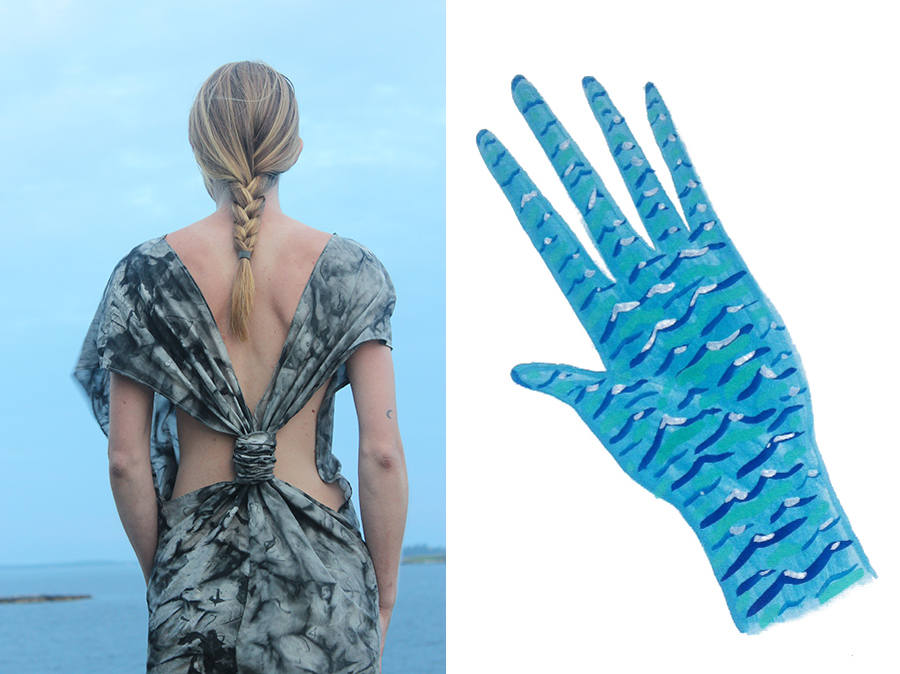
AE: When I look at your work, I think of something Cézanne was once quoted as saying: “When I judge art, I take my painting and put it next to a God-made object like a tree or flower. If it clashes, it is not art.” Some of your pieces almost perfectly blend into their surroundings. Is that a sensation you want to bring to the wearer of the garment?
MB: Definitely, yes. Always. The past couple of collections that I’ve done have dealt with the idea of camouflage where you become so submerged into your environment that you’re wearing it.
Out here, [working off the grid] really pushes me to make things in a different way, be more aware of the process, and work in a more sustainable way.
AE: I noticed that especially in your Island & I collection. There are a few images of your pieces where the model is almost invisible and really does become part of the landscape.
MB: I think that collection in particular was even more so because I made it on Bear Island, completely off the grid, and only with what I had here, so it had even more of that intense sense of place than other collections I’ve done where I can go to a store, change my ideas a million times, and rethink things. [On Bear Island], I was working with salt water and I had heliographic paint, and I happened to have fishing nets around, and rocks I could put on the silk to change the texture. It really became very much about what this place offered to me and what I could interpret from it.
AE: So that collection was made without any modern machinery. Is that normal for your process? Could you talk me through how you build a body of work?
MB: So usually I would have—and love to have—running water and power. It makes it way more seamless when you don’t have to consider every single step. But out here, it really pushes me to make things in a different way, be more aware of the process, and work in a more sustainable way, which I want to incorporate into my work in the future. But out here, yeah, we have very little solar power. I found an old sewing machine from the early 1900’s that hadn’t been used for a long time that is just foot powered. So I borrowed that from the big house on the island and brought it down to the barn where I work. That’s what I used to sew, and I didn’t really do any ironing. The pieces that I made here, I wouldn’t do a production line. That was just a one-off. The other collections that I do are usually four or five of each item, and then I sell them. This one was more just a concept collection. It definitely is an experience to make work on the island. This summer, I’m actually taking time off from doing clothing design. It was so time consuming to create that collection that I’ve decided to wait until the residency and then I can go crazy with all of that stuff.
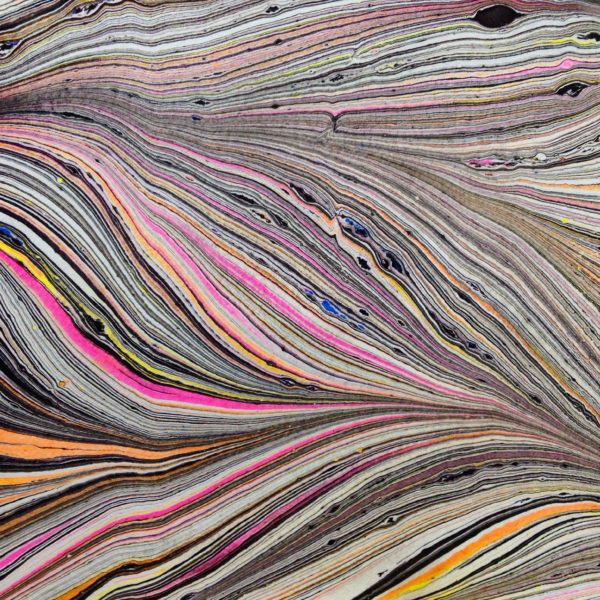
AE: Speaking of the residency, did you apply to this particular one at the Textile Arts Center because it is supportive of a certain kind of project making?
MB: I do sculptural work and I paint all the time, but I also started this clothing company because I’ve been obsessed with fashion for my whole life and it was also a way for me to support myself more. But it’s been hard to merge those things. People want you to say you’re one or the other; it’s a mouthful to say “but I also do this!” and I’m more well-rounded than that. There aren’t many residencies that accept textiles and fashion as a fine art. My whole proposal for the residency was to continue working with fashion and textile design but really amplifying and pushing it into more of a contemporary art space by creating more wearable sculptures, or combining the pieces with film or performance, making conceptual tapestries: pushing it into a more lush, interesting place, not just as a sellable item. I’m trying to merge concepts together. I want to take these two sides of myself and figure out a way to put them together so I can feel more confident as an artist.
AE: Which artists are in your artistic family tree?
MB: I look at a lot of different kinds of artists. My favorite fashion designer right now is Iris Van Herpen who is from the Netherlands. She creates really conceptual collections that are totally insane. She works with architects, scientists, neuroscientists, and biologists. She’s always working with these incredible people and creating collections based around natural phenomena. And not only is her subject matter really fascinating, but the materials she works with are cutting-edge: she was the first designer to 3-D print shoes and clothing. Everything she’s doing is pushing the boundaries. She creates four or five collections a year and everything is totally haute couture. She’s incredibly fascinating and inspiring.
I’m also really obsessed with James Turrell and Olafur Eliasson who work with nature and light. I could go on and on…James Turrell is definitely one of my favorite people to read about.
I was almost bitten by a rattle snake. I have these animal cards that I use — they’re almost like a tarot deck — and I was continuously picking the snake card over and over again. The snake symbolizes transformation: you shed your skin and move in a new direction. I picked that card so often I thought, “Okay, okay, I get it. I’ll wear it. I’ll tattoo it on my body. I understand the magic of the snake now.”
AE: Your aesthetic seems connected to the more free-form fashions of the 1920’s that were so liberating to women, but you also include highly contemporary details—I’m thinking specifically about the tailored wool trousers with the slit details at the knee. Do the decisions to blend aesthetic worlds come organically as you make, or do you have a preconceived notion of what kind of elements you would like to join together?
MB: I think it’s always changing. In that case, I found that fabric and had been craving a pair of big trousers for myself. I’m always trying to flip something on its head or create a new approach. Whether it be that the textile is really unique or whether it’s the form, I always want to change things up. It’s also being really aware of the body and clothing the body in a different way, or being aware of how your body moves and the functionality of clothing. A lot of the things I make are oversized so they fit multiple body types. I don’t want to restrict it to a certain kind of body. A lot of the time I’m thinking about how we clothe ourselves and make decisions to represent ourselves in a creative way. I want to give people the opportunity to do that.
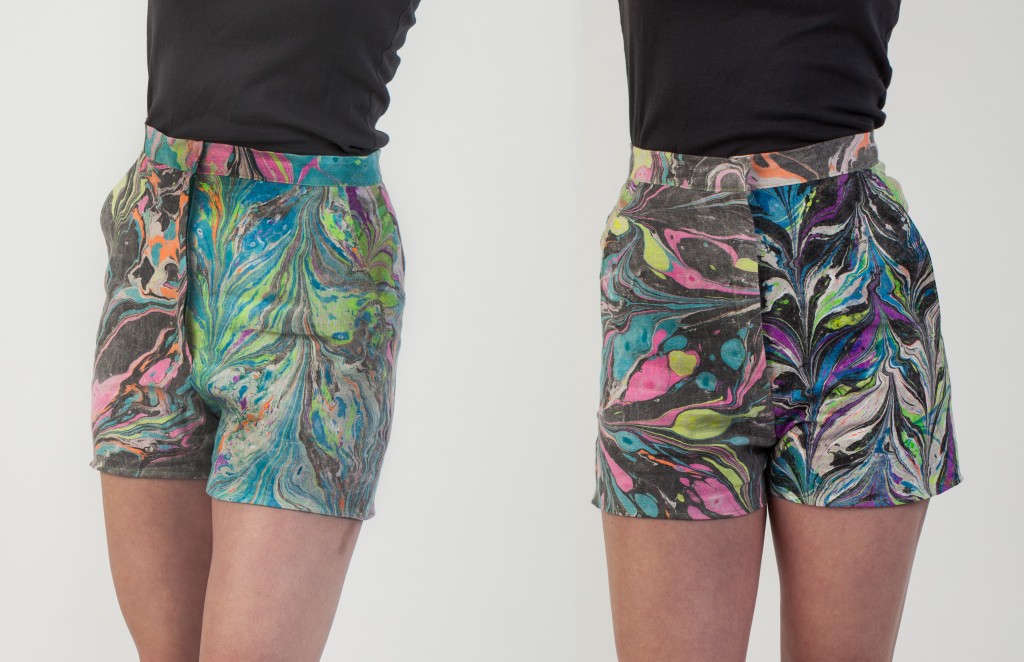
AE: What problems or questions are you working through in your practice?
MB: I’m trying to start a clothing company and I do everything on my own: I do all the dying, I sew everything myself, and that’s not sustainable. So that’s something that I’m trying to take to the next level. That’s a practical thing that I’ve been struggling with. It just takes so much time that I’m losing the joy at certain points. I have so much joy in creating or designing something, but then when you’re doing it over and over, you become a factory worker. I’ve worked with that kind of production setting before, and I can do it, but I’d rather not.
I’m also really craving time to research things because I want to find more depth in my work. It has sort of been a natural flow of ideas: I have a vague sense of what I’m doing based on my own history and how I see the world, but I’m ready to really delve into these concepts, like using symbology and ritualistic costume that you put on for certain occasions to invoke a sense of power. In our everyday lives we have the opportunity to clothe ourselves with intention and put power into the things that we are wearing in order to represent ourselves in a new way, or to feel powerful and confident. I want to work with that on a much deeper level.
I made those dresses with appliquéd snakes on them: I was almost bitten by a rattle snake. I have these animal cards that I use — they’re almost like a tarot deck — and I was continuously picking the snake card over and over again. The snake symbolizes transformation: you shed your skin and move in a new direction. I picked that card so often I thought, “Okay, okay, I get it. I’ll wear it. I’ll tattoo it on my body. I understand the magic of the snake now.” I want to delve into that more and the residency gives me three months to do some really extensive research. I think when you have a backbone in your work—that comes from a place of history—it gives your work a lot more meaning and depth. Out here on the island I don’t have internet, so the research is pretty much confined to researching my own brain or researching the landscape or what books we happen to have in the library. It’s going to be a new experience to delve specifically into subjects.
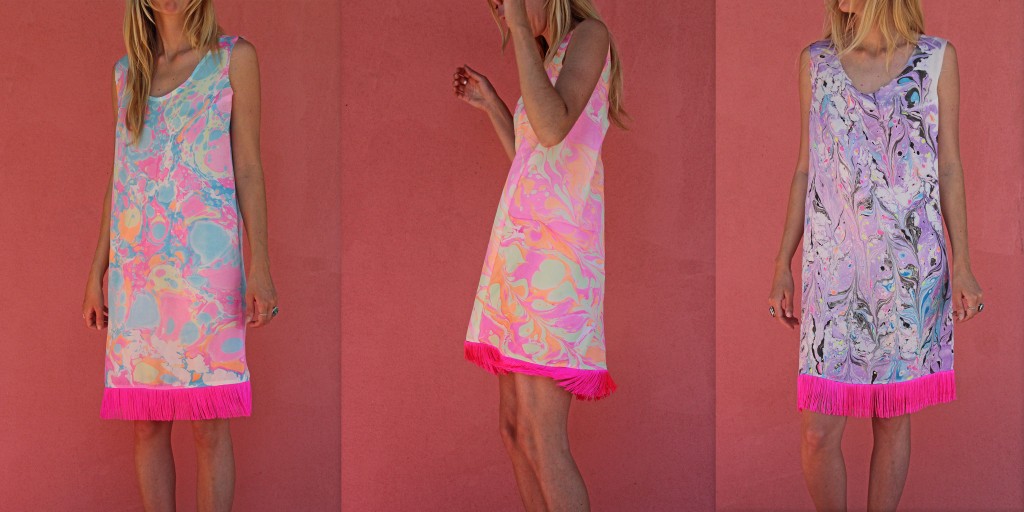
AE: What’s been on your reading list?
MB: A book that I just finished reading is The Eagle’s Quest by Fred Alan Wolf. He’s a physicist, I believe, and has always been really interested in spirituality and these inexplicable experiences he had as a child that he couldn’t explain through science. So he goes on this quest to find shamanic rituals all over the world and partake in them, whether it’s ayahuasca or some kind of ritual with the Inuits. He has all of these incredible experiences that he can never explain scientifically, but realizes at the end that every single ritual he took part in ended up with some kind of out-of- body experience, always had some singing or chanting or some kind of music rhythm. He came to the conclusion that, if there is enough vibration, it can ripple into these other realms. That can open up whatever force fields there are and can allow us to have these experiences. I feel like a lot of my fabrics are sort of psychedelic so I love reading about things like that. I think it’s pretty important to be connected to the idea that there is so much we don’t understand. We live on one little plane of this universe. There’s so much more going on than we even realize.
AE: Opening up plane through vocal vibrations is such a wonderful and beautiful thought.
MB: Yeah, when I was reading it, I was humming to myself more to open up my own vibrations a little bit to change emotional moments. You can really feel it. It resonates inside of your chest. You can feel it altering the pattern.
AE: Lastly, I would love to know where I can find your amazing snake dresses.
MB: I’m currently selling at The Rising States which is a really fabulous boutique on Ludlow Street in New York City and I will be selling my work soon at Spoke in Kittery.
For more information on Maisie Broome, please visit her website at www.myfawnwy.com. To find out more about her upcoming residency, please visit www.textileartscenter.com.
- Heliography is a printing process invented in 1822 that uses direct light from the sun to fix color to exposed areas. ↩

